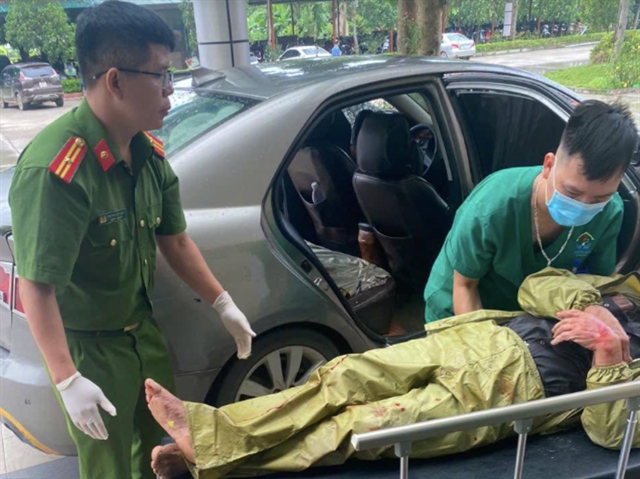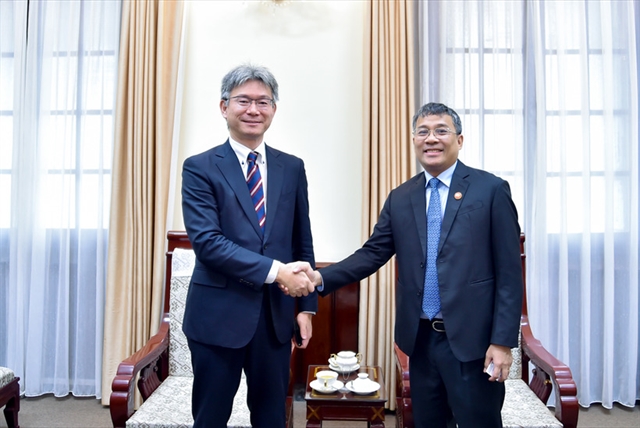 Society
Society

United Nations Development Programme (UNDP) resident representative in Việt Nam, Caitlin Wiesen applauded Đà Nẵng for its commitment to its growth as a smart, innovative and thriving city.

|
| A view of Đà Nẵng city's centre. The city and UNDP have been boosting co-operation to build Đà Nẵng into a smart, green and inclusive city. — VNS Photo Công Thành |
ĐÀ NẴNG United Nations Development Programme (UNDP) resident representative in Việt Nam, Caitlin Wiesen applauded Đà Nẵng for its commitment to its growth as a smart, innovative and thriving city.
Wiesen spoke at a seminar to introduce the City Lab initiative in the central city yesterday, stating that UNDP commits to support Đà Nẵng towards becoming a city for People, Planet and Prosperity.
The City Lab initiative is the very first step to implement a Memorandum of Understanding signed by UNDP and the city earlier this month.
“A key question to address across all the planned innovations is how to support the city to be more agile, adaptive and anticipatory. This includes identifying how best to embed innovation methods and practices in the city to sustainably tackle social and public issues,” Wiesen said.
Vice chairman of the city’s People’s Committee, Hồ Kỳ Minh said: “Traffic planning; environment and waste management; smart city; sustainable tourism development; innovation; and e-Government are the matters of interest to Đà Nẵng in its urban development process.”
As part of its commitment to support City Lab exchange among city networks, UNDP has organised the mission of Gabriella Gomez-Mont, former founder and director of the Mexico City Lab. She is a member of the international advisory committee for the mayor of Seoul, fellow of MIT, Yale, Harvard, and named one of the 100 most creative people in business by Fast Company magazine.
She presented many excellent examples on emerging city strategies around getting organised for ‘night time’, including how Mexico City got its public bus system organised for 3 million night commuters.
“The more ideas, resources and information flows openly across different sectors, the more innovative the city will be,” Gomez-Mont said.
“In the meetings with Đà Nẵng, there is a huge potential for City Lab to help solve urban challenges and make the city a reference of what is possible in the Asian context."
Leaders of relevant departments of Đà Nẵng agreed that urban challenges can no longer be solved by the Government alone. They are thrilled to learn from the great examples of Mexico City Lab on how to prototype collaborative practices and catalyse citizen talent to create an innovative and resilient Đà Nẵng.
Lê Sơn Phong, deputy director of Đà Nẵng’s Department of Information and Communication, noted the challenges in the building of a smart city, including the lack of skills, results measurement and how to respect the privacy of citizens. He said the City Lab was a good idea as it would allow solutions to be found for pressing issues.
“The UNDP-supported Chatbot is very effective, helping to reduce the number of staff while increasing the reliability of the information for citizens,” Phong said.
“Đà Nẵng is keen to move on with this initiative to the next level."
Waste management is one of the most pressing issues in the city, with waste increasing by 18-20 per cent annually.
The UNDP Regional Innovation Centre in Asia and the Pacific, UNDP in Việt Nam and Alberta CoLab of Canada held a systemic design workshop with local and national government and business partners to build human-centred understanding of waste systems in Đà Nẵng to fight plastic pollution and promote a circular economy.
UNDP also helped strengthen the impact of a public administration reform project in the city in 2012-16.
Đà Nẵng is planning to become a ‘smart city’ and the first in Việt Nam to join the ASEAN ‘smart’ city network by 2030.
It was the first city in Việt Nam to launch an e-Government system in 2014, and transferred the system to 16 cities and provinces in 2016.
According to a report, Đà Nẵng’s e-Government system has been used by 225 agencies and 4,000 users.
Đà Nẵng has provided 1,200 online administration procedures, including one-stop shops, residential management, public transport and water supervision through the e-Government system, while free wireless internet services offer a maximum of 20,000 connections in public places, according to the city’s information and communications department. VNS




